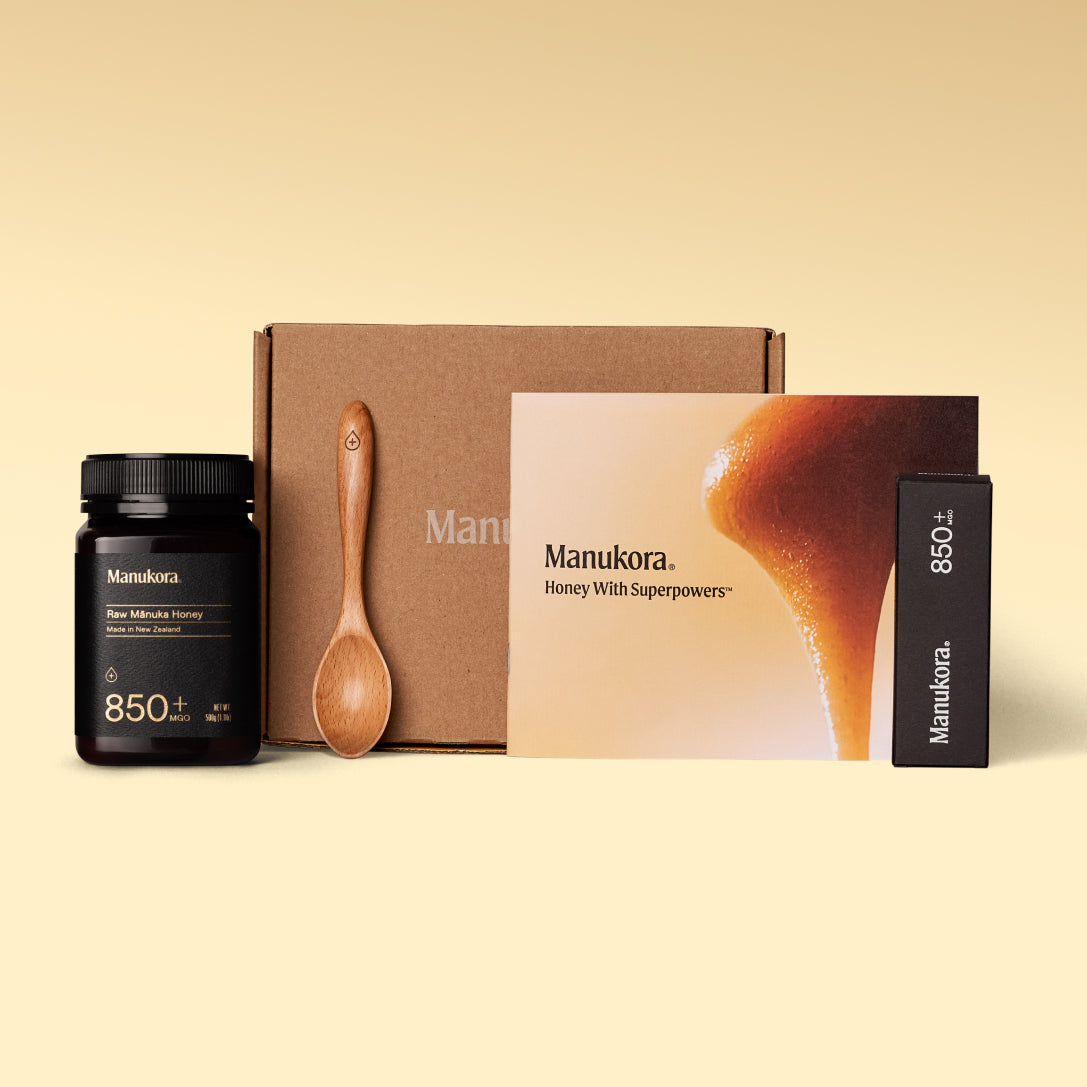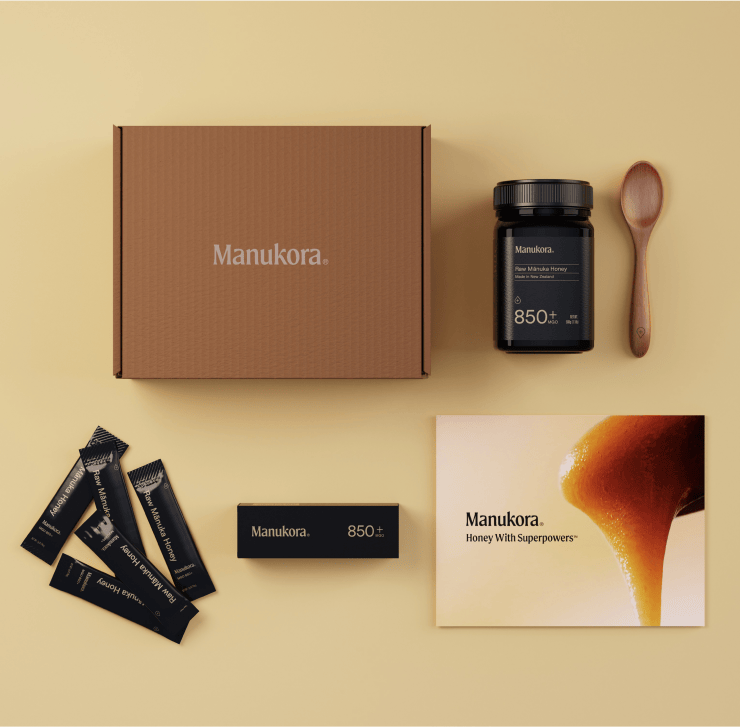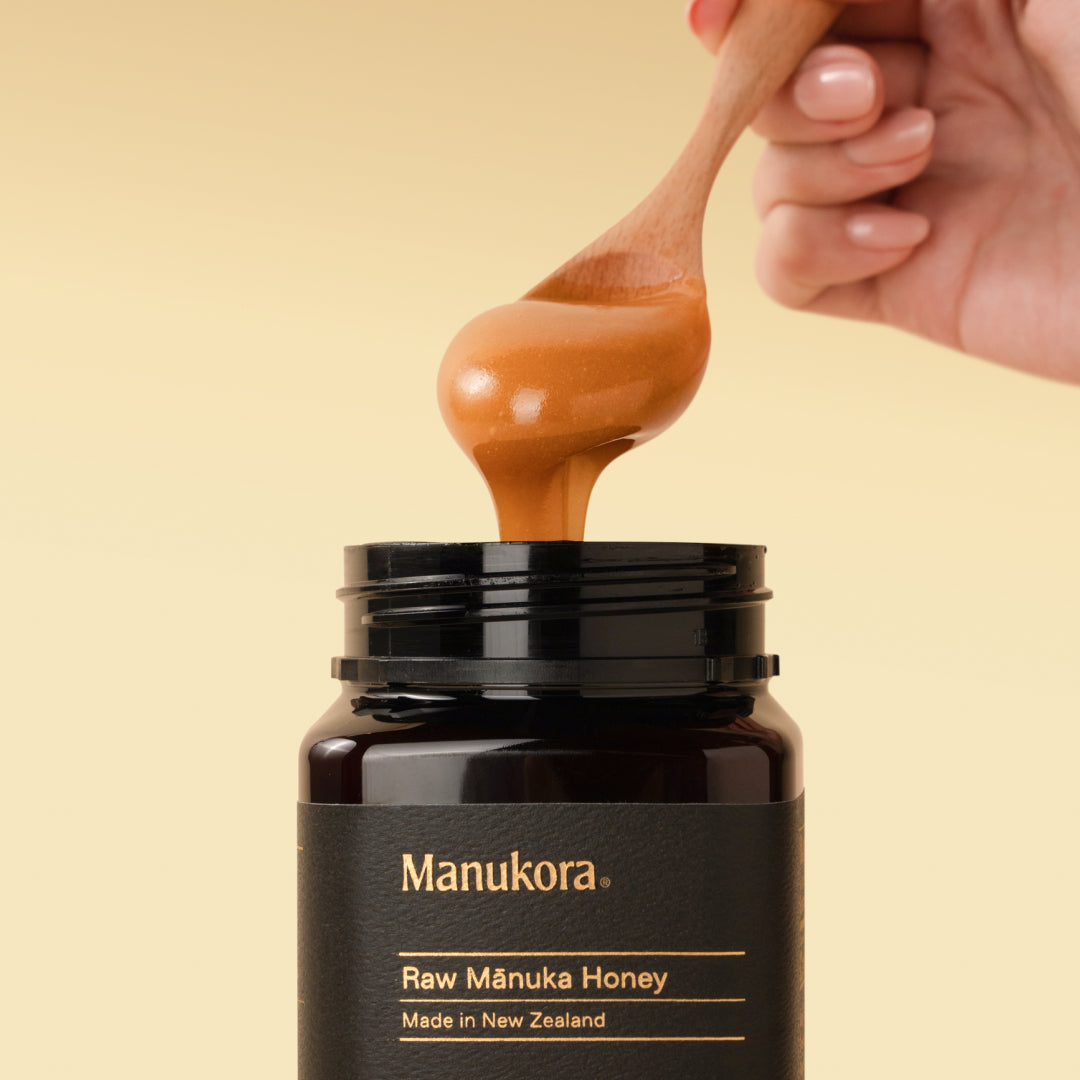Executive Summary:
- Manuka honey is made by the common Western honey bee.
- The uniqueness lies in the Manuka tea tree, the environment, and the bees’ foraging behavior.
- Manukora’s bees forage in remote New Zealand regions rich in Manuka tea trees.
- Bee health, natural foraging, and sustainable beekeeping all influence honey quality.
- Manukora honors traditional practices and provides full traceability for every jar.
What Kind of Bees Make Manuka Honey? Discover Their Unique Role
Manuka honey is known for its rich flavor, thick texture, and strength, but few people stop to think about the bees behind this delicious nectar. Is there a rare or special bee behind Manuka’s magic?
Spoiler alert: The bees aren’t rare, the process is. In this article, we’ll explore what kind of bees make Manuka honey, the special relationship they share with the Manuka tea tree, and how Manukora’s beekeeping practices ensure each jar delivers something truly exceptional.
What Kind of Bees Make Manuka Honey?
In short, no, there isn’t a “Manuka honey bee”—just very hardworking ones. Manuka honey is produced by the Western honey bee, scientifically known as Apis mellifera. It’s the same species responsible for most of the honey around the world.
During the short Manuka blooming season, these bees collect nectar exclusively from the Manuka tea tree (Leptospermum scoparium), a wild plant that grows only in New Zealand. The nectar they gather is what gives Manuka honey its signature strength, texture, and flavor.
While the bees themselves are common, their seasonal focus and the unique terrain they inhabit make their honey truly rare.
The Manuka Tree and Bee Interaction
The Manuka tea tree blooms for only a few weeks each year—usually between late spring and early summer. This narrow window means timing is everything. Beekeepers must position hives in remote regions right when the Manuka flower opens.
Many of these landscapes are rugged and wild, often accessible only on foot or by helicopter. Bees in these areas face challenges but also enjoy the reward of pristine foraging zones, free from agricultural interference.
The nectar from Manuka blossoms is thick and complex, rich in the nutrients that contribute to MGO levels and the honey’s distinct texture. The short bloom, difficult access, and specialized nectar are all reasons why Manuka honey remains a rare, premium product.
Why Bee Health and Behavior Matter
Bees are deeply influenced by their environment. When they’re able to forage naturally and without stress, the honey they produce tends to be richer in texture, strength, and flavor.
At Manukora, we focus on giving bees the conditions they need to thrive. That means letting them collect nectar on their schedule, avoiding synthetic chemicals, and preserving the biodiversity around their hives. All of this supports the natural creation of honey with distinctive qualities.
We can even thank the bees for Manuka’s famous texture. Its thixotropic property—thick when still, soft when stirred—partly results from the interplay between bee behavior and the structure of Manuka nectar.
Manukora’s Approach to Beekeeping
Manukora honors time-tested traditions. We practice The Art of Ethical Beekeeping™, a method rooted in care, patience, and deep respect for the bees and the land.
We never force production. Our hives are situated in remote, wild regions of New Zealand, where Manuka tea trees grow naturally. These untouched environments ensure both the integrity of the honey and the health of the bees—qualities you’ll find when you Shop Manuka Honey from our sustainably sourced collection.
Every jar of Manukora honey comes with a QR code, allowing you to trace its exact origin, from the harvest region to batch purity. It’s part of our commitment to transparency, sustainability, and excellence.
At the end of the day, Manuka honey isn’t made by a different species of bee. It’s made by common bees in uncommon conditions, like remote landscapes, rare blooms, and a centuries-old relationship with the Manuka tea tree.
At Manukora, we honor that relationship with care, intention, and transparency. If you’re learning about bee behavior or enjoying a heaping spoonful of this delicious liquid gold, keep in mind that it’s all a celebration of nature working in harmony.
To discover more about how we care for our bees and preserve the purity of their work, visit our About Us page or scan the QR code on any Manukora jar to trace the journey from hive to home.
Frequently Asked Questions (FAQs)
Are Manuka honey bees a different species?
No. Manuka honey is produced by the European honey bee (Apis mellifera), which is found worldwide. What makes Manuka honey special isn’t the bee, but the unique Manuka tea tree and the pristine landscapes the bees forage in during a very brief blooming season.
What makes Manuka honey bees special?
It’s not about the bee species—it’s about their environment. When these bees collect nectar from the Manuka tree in untouched New Zealand regions, they help produce a honey unlike any other. The natural conditions and responsible beekeeping elevate the entire process.
Why is Manuka honey rarer if it’s made by common bees?
Manuka honey is rare because the Manuka tree blooms for only a short period each year. The bees must be in the right place at the right time, and even then, only a small percentage of the honey will reach high MGO levels. That’s why every jar is a limited treasure.
Does bee health impact Manuka honey quality?
Yes. Just like plants thrive in the right conditions, bees create better honey when they’re healthy and stress-free. Natural foraging, clean environments, and ethical beekeeping all contribute to the MGO grade and taste of Manukora’s honey.


















